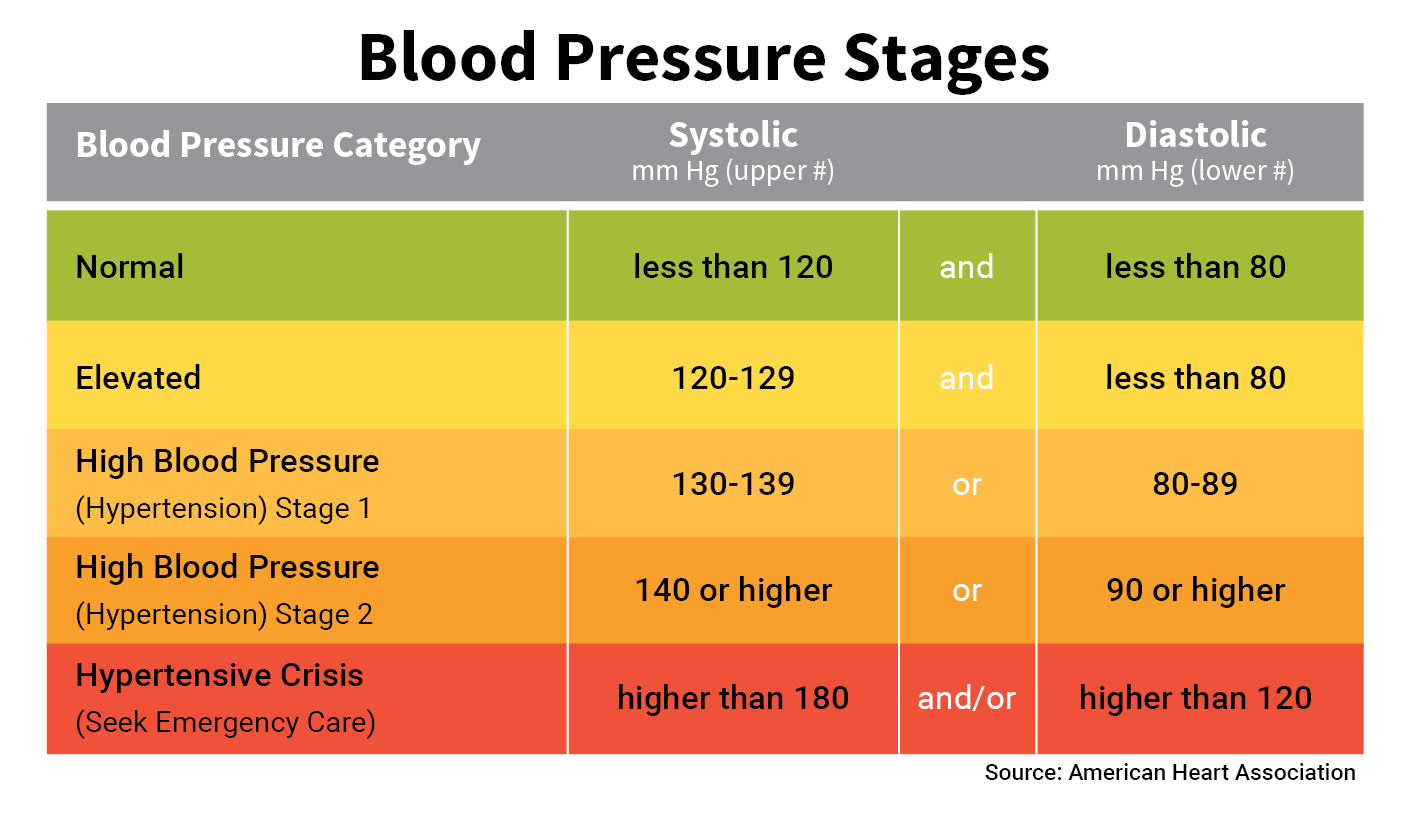Diastole vs. Systole: Know Your Blood Pressure Numbers
What Systolic, Diastolic Blood Pressure Numbers Mean
When you get your blood pressure numbers, there are two of them. The first, or “top” one, is your systolic blood pressure. The second, or “bottom,” one is diastolic blood pressure.
Knowing both is important and could save your life.
What Does the Systolic Blood Pressure Number Mean?
When your heart beats, it squeezes and pushes blood through your arteries to the rest of your body. This force creates pressure on those blood vessels, and that's your systolic blood pressure.
Here’s how to understand your systolic blood pressure number:
- Normal: Below 120
- Elevated: 120-129
- Stage 1 high blood pressure (also called hypertension): 130-139
- Stage 2 hypertension: 140 or more
- Hypertensive crisis: 180 or more. Call 911.
What Does the Diastolic Blood Pressure Number Mean?
The diastolic reading, or the bottom number, is the pressure in the arteries when the heart rests between beats. This is the time when the heart fills with blood and gets oxygen.
This is what your diastolic blood pressure number means:
- Normal: Lower than 80
- Stage 1 hypertension: 80-89
- Stage 2 hypertension: 90 or more
- Hypertensive crisis: 120 or more. Call 911.
Our chart below has more details.
Even if your diastolic number is normal (lower than 80), you can have elevated blood pressure if the systolic reading is 120-129.

Blood Pressure Ranges
If you have normal blood pressure, your blood pressure is less than 120/80. Stick with an active lifestyle and healthy diet to keep that going.
Is your blood pressure above the normal range, in either or both systolic and diastolic levels? Your doctor will want to have more than one blood pressure reading before diagnosing hypertension.
Treatments include lifestyle changes, and if that’s not enough, may also include medications.
Lifestyle changes include:
- Cutting back on sodium. Ask your doctor what your daily sodium limit should be. Read the Nutrition Facts label on food products.
- Getting more exercise. Studies show benefits with 3-4 sessions per week, each lasting 40 minutes, of aerobic exercise (the kind that makes your heart beat faster).
- Losing weight, if you’re overweight. You can expect to shave about 1 point off your blood pressure numbers for each pound lost.
- Eating a healthy diet. The DASH diet is designed to improve blood pressure. DASH stands for Dietary Approaches to Stop Hypertension. It favors vegetables, fruits, whole grains, low-fat dairy, poultry, fish, and chicken.
- Limiting alcohol to no more than one drink a day for women or two for men.


No comments:
Post a Comment